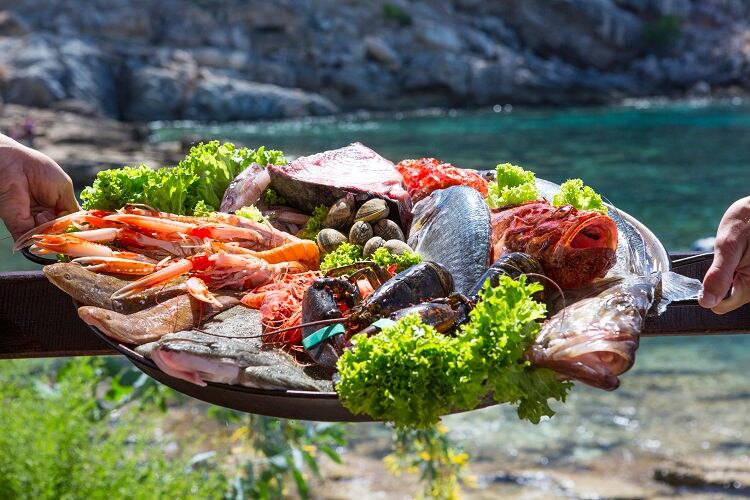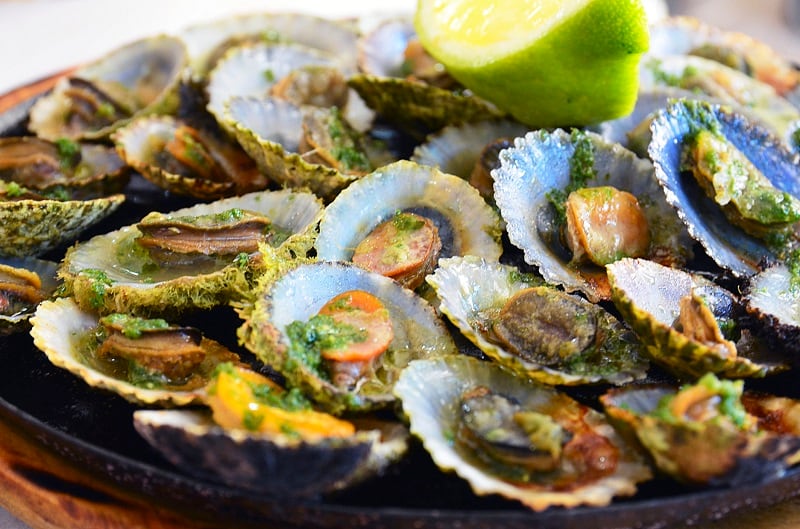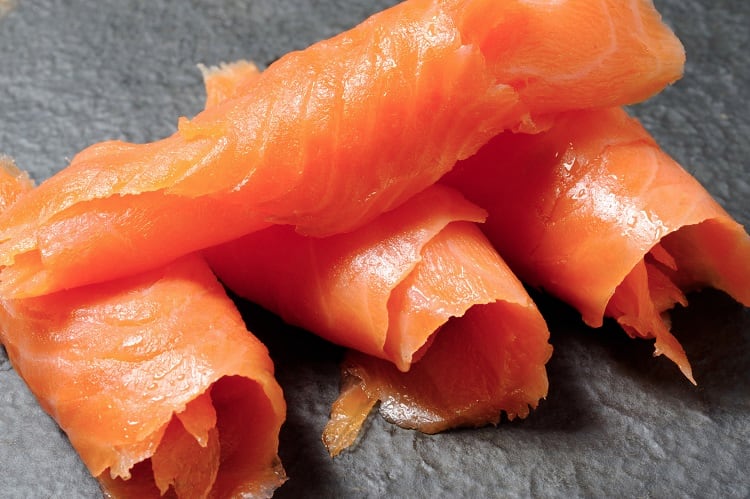With global populations on the rise, and limited land on which to cultivate more food, aquaculture is considered a critical food source for the future.
As it stands, aquaculture produces 52% of aquatic animal products consumed. Marine aquaculture, otherwise termed ‘mariculture’, generates 37.5% of this production.
While compared to equivalent products farmed on land, mariculture products may offer a more climate-friendly option – because they often have lower greenhouse gas (GHG) emissions – an international team of researchers has stressed that sustainable intensification of low-emissions mariculture is key to maintaining a low GHG footprint as production scales to meet future demand.
In a new study published in Oxford University Press journal BioScience, the researchers have identified opportunities to improve mariculture’s GHG footprint in three specific sectors: fed finfish (including salmon and tuna), bivalve, and seaweed cultivation.
CO2 footprint analyses
Of the three industries, fed finfish has the largest GHG footprint. The researchers estimate total GHG emissions for fed finfish across the supply chain, excluding post-farm transport, is 3271kg of CO2e per ton of wet weight.
This far exceeds that associated with seaweed or bivalve culture, neither of which require feed inputs. It has been estimated that again, excluding postharvest transport, emissions from bivalve production range from 5 to 1874kg of CO2e per ton of weight, with a median estimate of 392kg of CO2e.
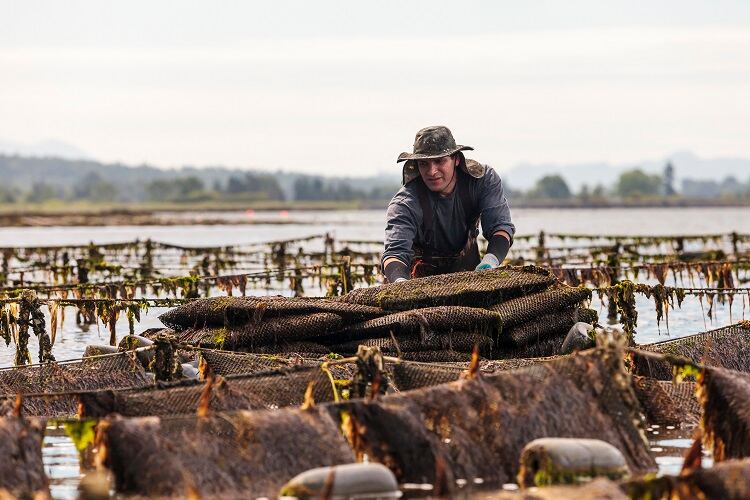
This is higher still than seaweed, which based on available data, ranges from 11.4 to 28.2kg of CO2e per metric ton, with a median of 22kg of CO2e.
Reducing direct and indirect GHG emissions
Common approaches to reducing emissions from on-farm and fuel use across seaweed, bivalve, and fed finfish operations include shifting to low-emissions energy sources and biofuels, as well as sustainable building materials.
In fed finfish mariculture, for example, switching from diesel oil to natural gas has been shown to reduce potent GHG nitrous oxide emissions from farmed salmon by 85% and CO2 emissions by 20%.
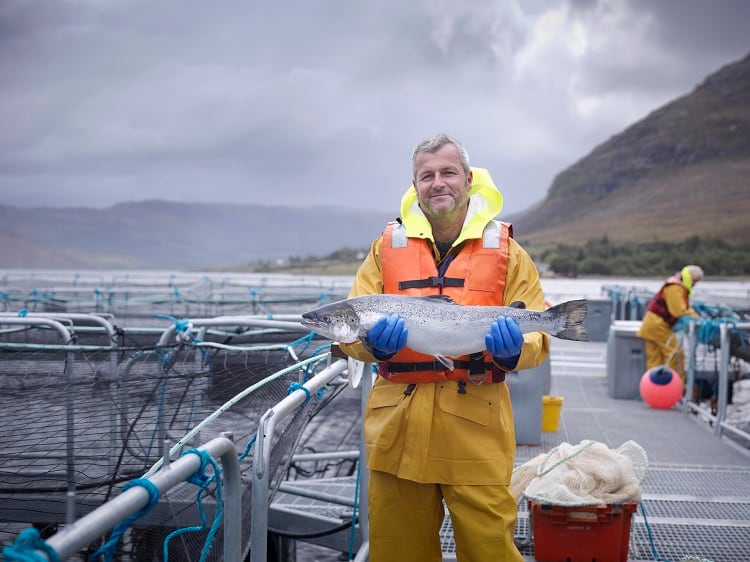
And emissions from on-farm energy use are four times lower using nuclear than coal generated electricity.
Of course, sometimes mariculture operators have little say over which energy source they use, given that changes in a country’s energy portfolio and the market forces driving the availability and affordability of biofuels are likely to occur at a national or regional level.
How can emissions in finfish mariculture be avoided?
In coastal fed finfish mariculture, site selection is key to limiting avoidable GHG emissions.
Area of seagrass and other sensitive carbon habitats should be avoided where possible. In cases where this cannot be completely avoided, reduction in environmental GHG emissions may be achieved through coastal farming practices such as fallowing or regularly shifting the location of infrastructure within the broader farm area.
Actions that reduce the exposure of seagrass to negative impacts are preferable to ecosystem recovery attempts after damage has occurred, the study authors stressed: “If seagrass meadows are lost, recovery can take decades and may not occur if at all…”
Another opportunity to decrease GHG emissions from fed finfish mariculture may lie in fish feed, for example if operators shift to species that require less feed, or alter the composition of feed to reduce eutrophication.
Improvements in feed conversion radio for fed finfish species can be achieved through selective breeding techniques, as well as through innovation in feed composition.
Avoiding and offsetting emissions in bivalve mariculture
Seabed disturbance and seagrass loss is also a risk in bivalve operations.
An alternative to on-bottom culture lies in raised culture. While erected poles or racks can physically disturb seagrass, and ongoing shading behind raised cultures reduce seagrass density, raised bivalve culture appear to have fewer impacts.
Methods used to harvest mature bivalves also have ‘profound’ impacts on seagrass cover, local benthic disturbance, and, as a result, blue carbon burial and storage.
According to the researchers, manual harvesting of raised mariculture is the practice least likely to disturb seagrass and buried carbon.
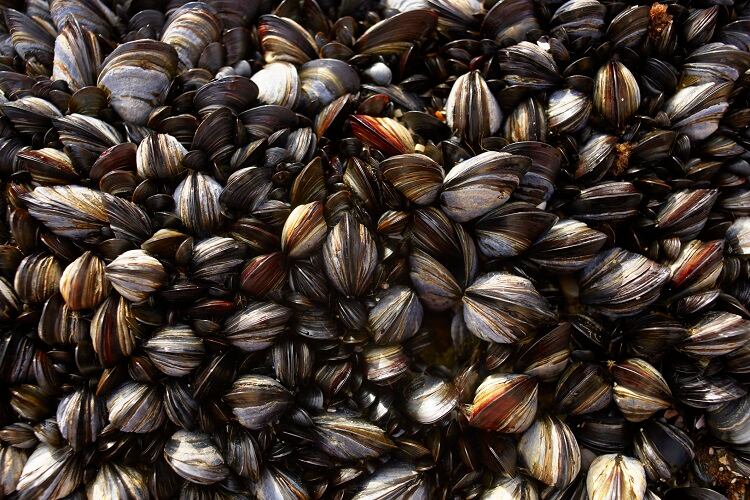
Another factor to consider in bivalve mariculture is the considerable volume of carbon-rich shell waste. It has been estimated that bivalve aquaculture is responsible for up to 11.9m tonnes per year.
While most bivalve shells are discarded in landfills, where they eventually release the stored carbon into the environment, the study authors suggest upcycling them could make for a win-win. Shells can be turned into calcium carbonate or calcium oxide, providing an abundant, cheap and sustainable resource for the construction industry.
“Repurposing shell waste as construction aggregate or for mortar mixes could potentially lead to long-term carbon storage while offsetting emissions from energy intensive, non-renewable resources.”
Climate-friendly seaweed mariculture
In seaweed mariculture, variability in the marine environment around farm sites affect its productivity. While biomass yields from seaweed mariculture can be ‘very high’, affected productivity can ‘significantly’ affect production efficiencies and GHG emissions. It can also lead to ‘negative interactions’ within the marine environment.
The researchers suggest careful site and special selection, or scaping up operations to optimise efficiency, can enhance productivity, all the while “offering the potential for climate-friendly farm designs, farm siting, and species choices to support the delivery of GHG emission reductions outcomes”.
Elsewhere, emerging markets for climate-friendly, non-food seaweed bio products provide an opportunity to achieve GHG emissions offsets. Using seaweed for biofuels and biochar, for example, could be a potential solution, although as the researchers stressed, the magnitude of any benefit is dependent on the energy requirements and energy sources used in product processing.
Leveraging seaweed for use in animal feed has achieved much attention of late, as a means to reducing GHG emissions compared with current feed sources, as well as adding functional food value. However, there are ‘few’ seaweed species suitable for these applications. According to the researchers, just one is currently shown to deliver methane reduction when used in livestock feed: Asparagopsis taxiformis.
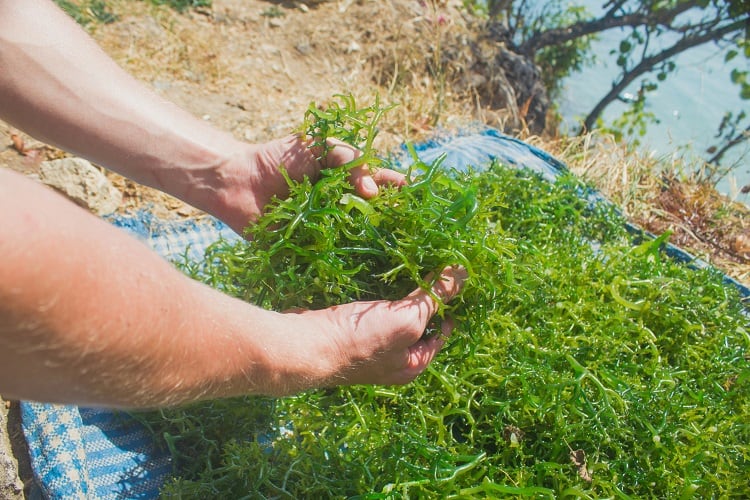
There is no ‘single silver bullet’ solution to avoiding and offsetting emissions in mariculture, the study authors concluded. Rather, each sector has different interactions with the surrounding marine environment and operational practices that offer opportunities for avoiding GHG emissions.
Source: BioScience
‘Climate-Friendly Seafood: The Potential for Emissions Reduction and Carbon Capture in Marine Aquaculture’
Published 25 January 2022
DOI: https://doi.org/10.1093/biosci/biab126
Authors: Alice R Jones, Heidi K Alleway, Dominic McAfee, Patrick Reis-Santos, Seth J Theuerkauf, Robert C Jones.


